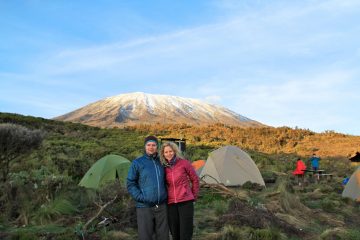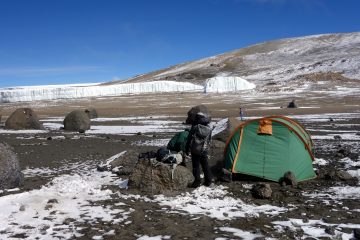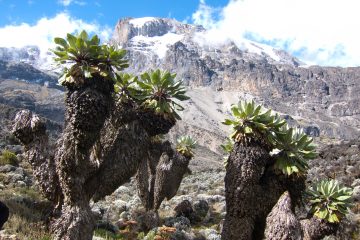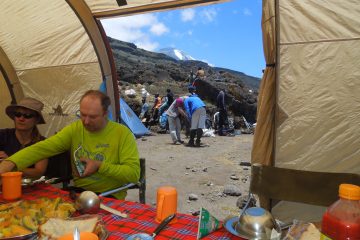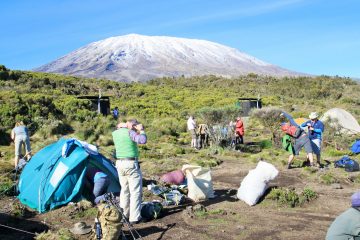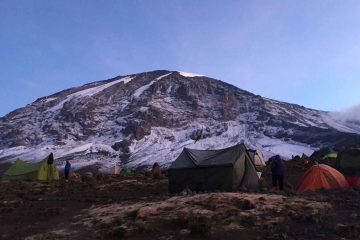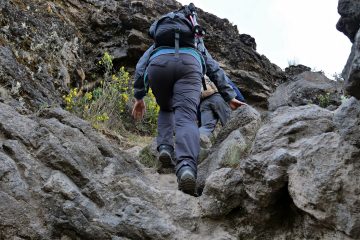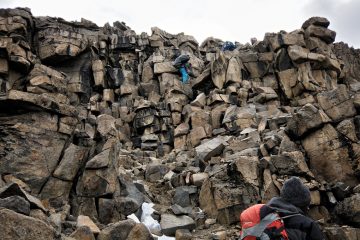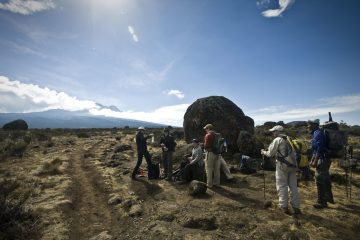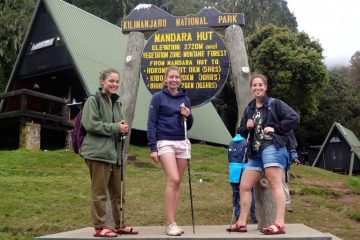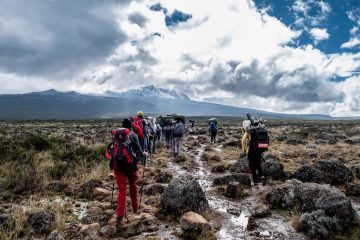Summit day is the main event day on Kilimanjaro, everything you have worked so hard for has brought you here, like the last sprint to the finish line during a marathon, because frankly, climbing Kilimanjaro is not a sprint, it is a marathon.
Summit day can be summarized as the toughest part of the trek mentally and one that demands the most out of you physically. From waking in the early hours in total darkness and sub-zero, freezing temperatures there is no other option than to do it, you cannot turn back now after coming all the way. But is worth it, and what a reward once you are done with it and have accomplished your ultimate goal of reaching the summit of Mount Kilimanjaro.
Here is what to expect on summit night
Fitful sleep / Early starts:
All Kilimanjaro routes converge here, it doesn’t matter which route you have chosen, either way, you will be spending your night at the high altitudes of between 4,600m and 4,700m. At altitudes this high, you will be facing three major challenges that will make you to hardly sleep at all.
- Sub-zero, freezing, and cold overnight temperatures
- Altitude Sickness (a few headaches here and there and feeling the urge to vomit)
- Anxiety about the climb ahead.
You might sleep but since most treks to the summit set off after midnight in order to be at the summit by sunrise, sleep will be partial as you will wake up in the very early hours in the middle of the night.
Climbing to the Crater Rim:
The scree-filled ground that offers no views apart from the torches that give you the only source of light, from your fellow climbers, the climb is usually divided into two. The first climb heads to the crater rim and then goes around the rim to Uhuru Peak which is the main summit point. Machame route approaches the crater rim at Stella Point at an altitude of 5,685m while the Marangu route approaches the crater rim at Gilman’s Point at an altitude of 5,681m. Be ready to gain an altitude of about 1,00m from your camp to the crater rim.
Many climbers quit or consider quitting on reaching the crater rim as it gives you the illusion of having summited already, bearing in mind the amount of effort you have put you bodies through, most people call it a day on reaching this rim. Seeing climbers try to give up and trying to get some rest here while mountain guides try to motivate name is a common scene at the crater rim.it is safe to say that, by experience, taking a break here would be a very bad idea, all you need to do is put yourself together, gather the confidence to push through this one last hurdle that stands between you and your goal of summiting. Maybe a quick snack and a selfie will do here.
Crossing the Crater rim area:
Crossing the crater rim would take you about 1-2 hours depending on the route you have chosen to climb Mount Kilimanjaro. At this point, you begin to feel your legs try to give up carrying your body as oxygen here is little and temperatures are below freezing point. The only positive thing is your valid dream of making it to the peak and the amazing scenery and views that are on display in this crater rim area. The crater itself is an incredible lunar landscape on one side and dramatic blankets of towering glaciers and if you are lucky enough, extensive views over the plains of Africa.
Uhuru Peak the Summit of Mount Kilimanjaro:
Uhuru Peak is the last push and achievement of your ultimate goal. This is the highest summit point on the rim located and an altitude of 5,895m, there is a reason they call it the roof of Africa to be honest as it is the highest point all over Africa. It is never a long affair at the summit, a little bit brief, time to take pictures in front of the rugged jauntily angled summit sign. This is it, a moment you will cherish forever after all the hard work, success in the end, and a sigh of relief rolled into one. You have made it to the top, at last!
Avoiding Crowds at Uhuru Peak
Sometimes depending on the season and the route you have used to climb Kilimanjaro, Uhuru Peak can often be crowded, especially at sunrise, when most of the climbers aim to reach there and get a glimpse of the sunrise. The only way to avoid crowds at Uhuru peak is to rise earlier than everyone else or choose to summit from dawn (6 am) so that you reach the summit during the day at around noon when few trekkers are around. The only disadvantage is that depending on the weather of the day, you might come across low-lying cloud cover and you will not catch a glimpse of sunrise from Uhuru Peak.
Descending the Mountain – Scree running:
After all the toil of ascending the mountain, descending is much easier in comparison. Despite the jelly leg-inducing, knee-jarring descent, you would take anything other than what you went through climbing. It is pure relief as you head back to camp and back to civilization at last. You will head back to camp for breakfast or lunch or both then after that you can either choose to skip camp or rest at the camp and take it slow.






